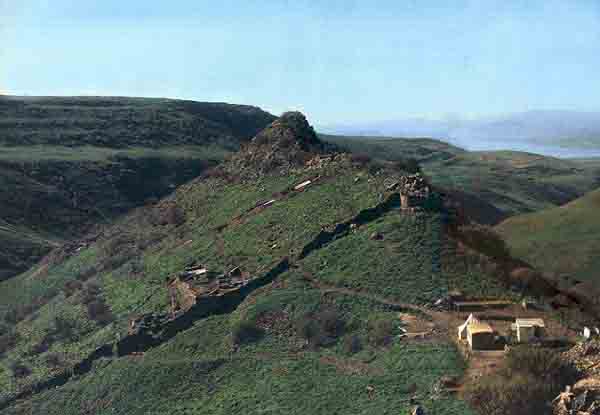Image Details

Danny Syon, courtesy Gamla Excavations
Some of Gamla’s structural features from before its destruction are still visible. A round tower on the razor-edge ridge anchored the right end of the city’s eastern defensive wall. (The natural features of the terrain protected the city’s other three sides.) According to the account of the first-century Jewish historian Flavius Josephus, the Romans undermined the tower, which collapsed, opening the way for their successful attack on the city. Halfway down the slope, the city’s synagogue adjoins the wall. A short distance below the synagogue, a V-shaped breach in the wall is one of the three places where Romans broke through in their initial, unsuccessful attack. The camp of the Gamla excavators, who have been digging at the site since 1976, appears at lower right.
